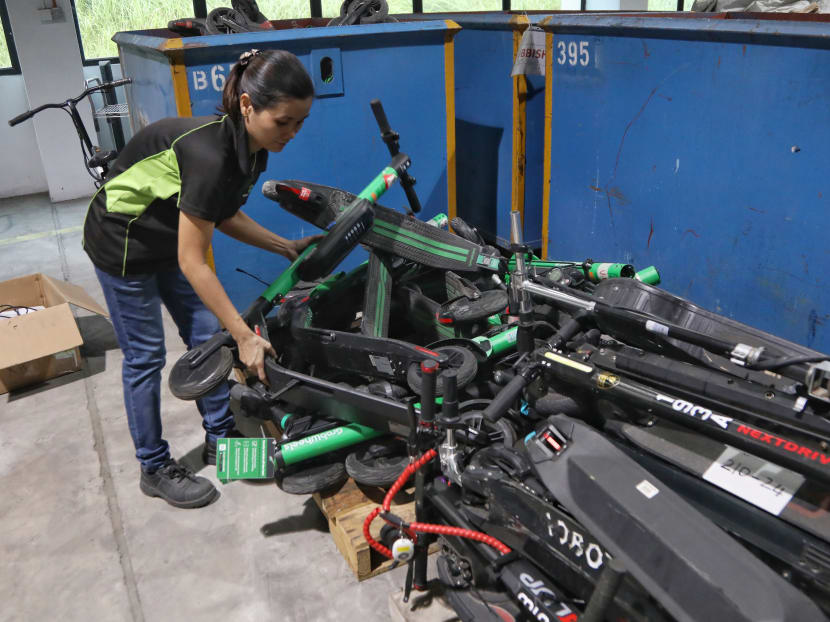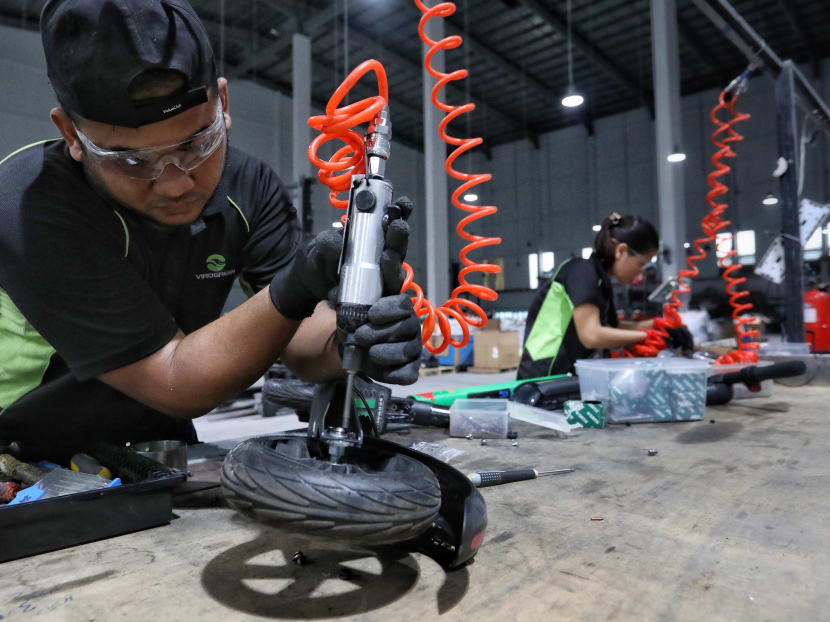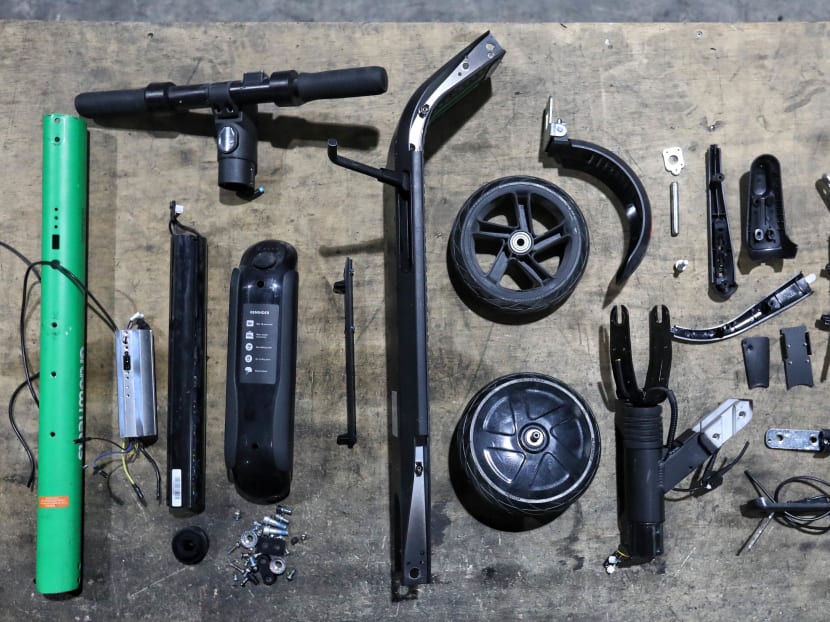What happens to a PMD after it’s been disposed of
SINGAPORE — It has been about a week since the Land Transport Authority (LTA) opened its designated personal mobility device (PMD) disposal points where owners of non-compliant PMDs can surrender their devices for free.

The personal mobility devices collected by local e-waste recycling company Virogreen come in all shapes and sizes.
SINGAPORE — It has been about a week since the Land Transport Authority (LTA) opened its designated personal mobility device (PMD) disposal points where owners of non-compliant PMDs can surrender their devices for free.
All PMD users in Singapore will have to comply by the UL2272 safety standard from July next year. Last Friday (Sept 20), the LTA said that PMD users will have until March 31, 2020, to dispose of their devices for free. Typically, e-waste recyclers would charge a fee for disposal.
But what happens to the PMDs once they have been surrendered at the collection points? TODAY visited an e-waste recycling facility recently to find out.
WHAT HAPPENS NEXT?
The LTA has appointed three e-waste recyclers, one of which is Virogreen Singapore.
Mr Sharul Annuar, who is Virogreen’s marketing manager, took TODAY through its e-waste recycling facility and demonstrated the process of how a PMD gets striped and recycled.
When the PMDs arrive at the facility, they are first dismantled by Virogreen’s four workers.

One device takes about 15 minutes to be completely stripped and in one day, Virogreen is able to dismantle an average of 20 PMDs.
The dismantled parts are then separated and sorted according to the material — metals, plastics, rubber and the circuitry.
Components that cannot be recycled, such as the plastic parts and the rubber tyres, will be disposed of.
Meanwhile, the metal parts will be sold and sent to a local manufacturer. As for the circuitry, Virogreen will try to extract some value from them, said Mr Sharul.

For example, the wires may contain copper which can be extracted and consolidated. “These will be given to the metal manufacturer as well,” he said.
The batteries go through a process called a salt bath. “The salt bath basically helps to eliminate any charge (from the battery). Typically, the process takes about 12 hours, but we leave it in for a day,” Mr Sharul said.
Once the batteries are discharged, they are safe enough for Virogreen to send them to local battery recyclers.
“They turn the batteries into what we call black mass. The black mass is essentially non-flammable and non-hazardous which makes them safe to be shipped out,” Mr Sharul said.
CHALLENGES WITH PMD RECYCLING
Virogreen has been receiving PMDs since around June this year when the LTA announced that owners have to comply with the UL2272 safety standard by January 2021. The deadline has since been brought forward by six months, to July 2020.
Aside from the LTA disposal service, Virogreen has been receiving a mix of PMDs — including non-compliant ones — from delivery and e-scooter sharing companies.
Grab, which is one of Virogreen's corporate partners, said that as an additional safety measure, it works with Virogreen to "dispose of older models of GrabWheels' e-scooters which are all UL2272 compliant and LTA-registered”. “E-scooters that are disposed of can also be old or have been overused," Grab noted.
Virogreen said the volume of PMDs that it receives is not the problem. “With our corporate partnerships, the models of e-scooters are quite uniform. So currently, our workers are trained to identify and dismantle those e-scooters,” Mr Sharul said.
“However, our workers have told us that the PMDs are all over the place. The battery packs are modified, some are hidden and some even have two batteries separated from each other,” he said.
“So we expect to have a slight decline in terms of productivity.”











